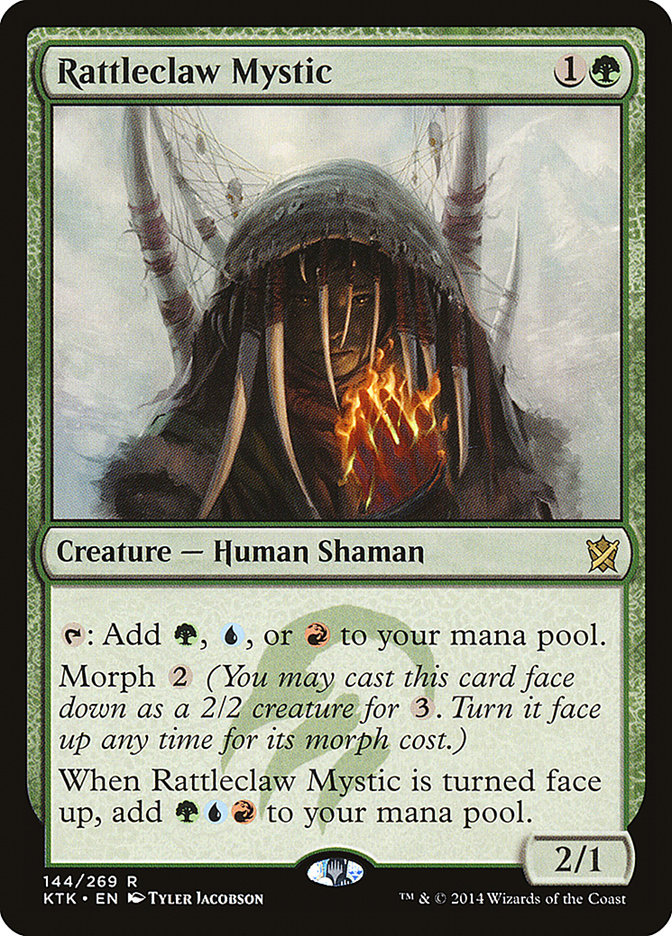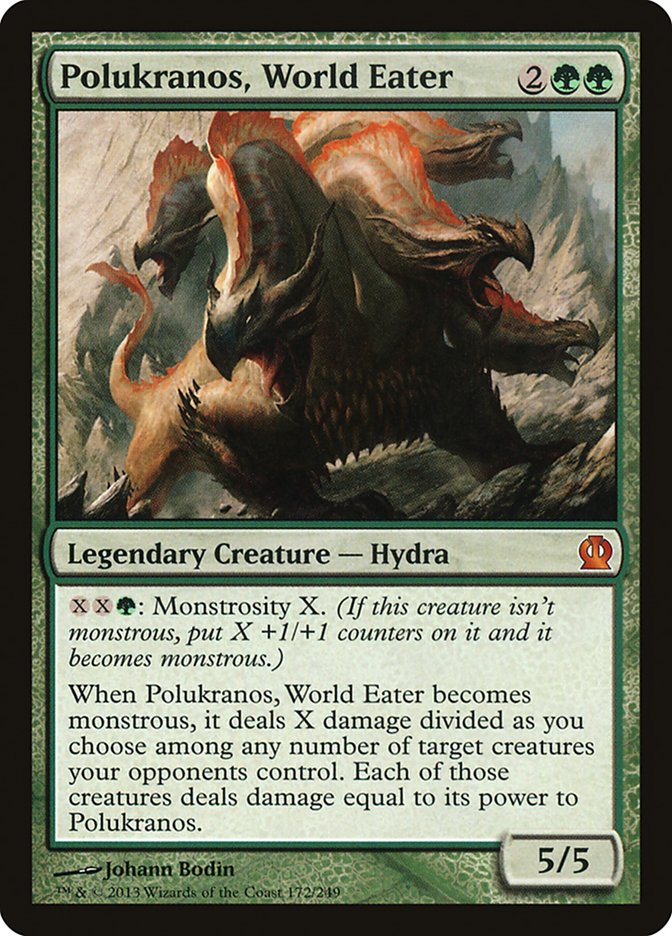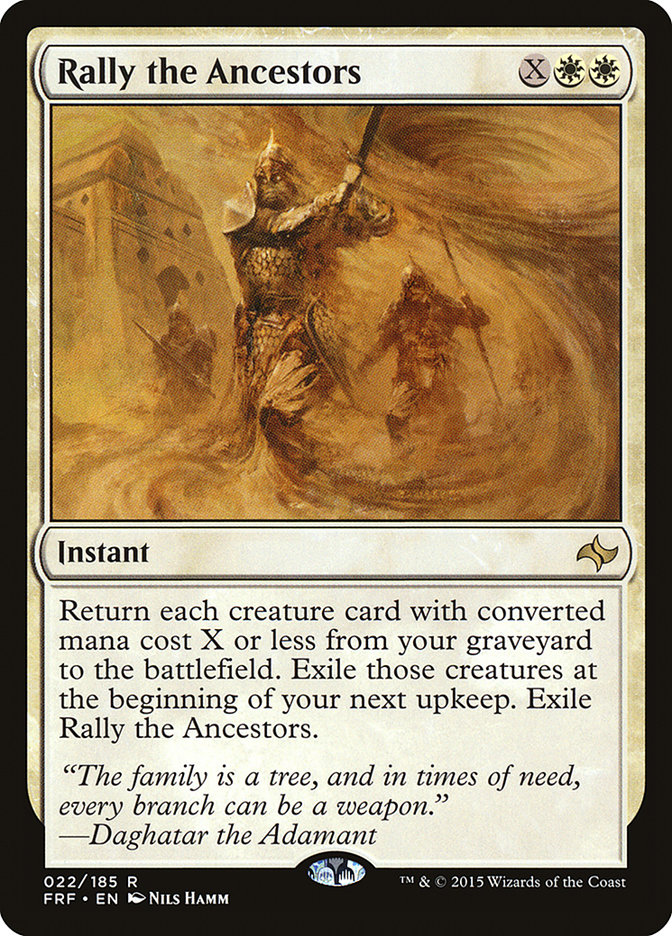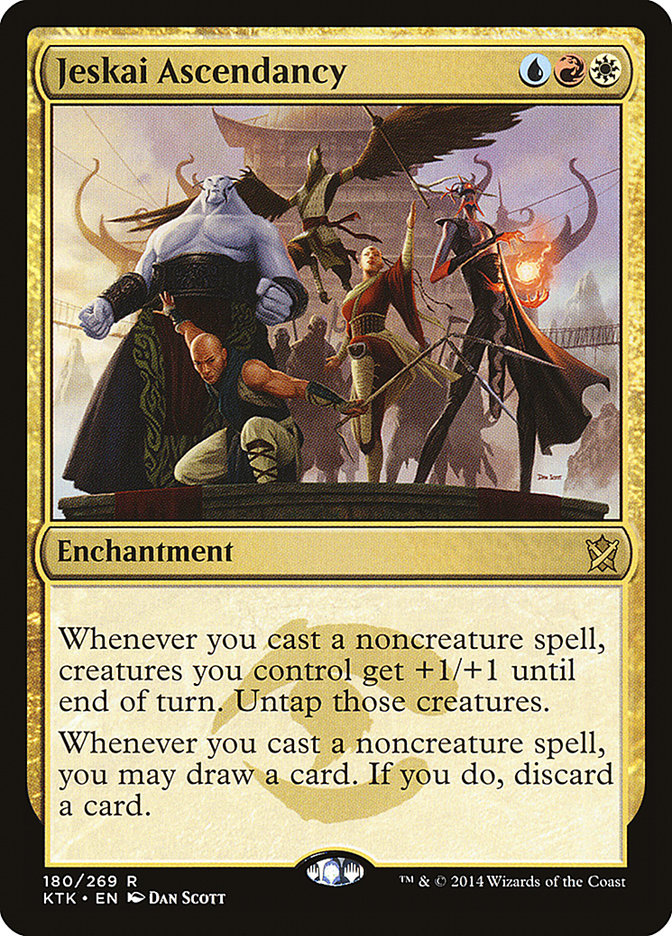For a while now, the Open Series has preceded the Pro Tour in unveiling a new set, often offering a glimpse into the Pro Tour metagame or substantially framing it by revealing creative new decks. In the fall, the Open Series in Edison acted as the opening act for Pro Tour Khans of Tarkir by showcasing the power of Green Devotion and Jeskai strategies.
With a preliminary metagame in place, it becomes the job of the Pro Tour participants to evolve from the Open Series and innovate to beat the weakly-established metagame. This can be seen by the dominance of Esper Dragons at Pro Tour Dragons of Tarkir and the ensuring Grand Prix in Krakow.
As Pro Tour Magic Origins is my first Standard Pro Tour in quite awhile, since Dark Ascension in 2012, having the opportunity to play in the preceding Open in Chicago was a great opportunity to work on the early metagame and observe it in person.
As much as I would have liked to use this opportunity to test out the many interesting cards from Magic Origins in a tournament setting, I also had the Players’ Championship race to worry about. The Pro Tour and various Grand Prix will keep me from the Open Series for a few weeks, so anything less than a great finish here would leave me in a huge hole for Season Three. That meant I had to go with something powerful, consistent, and boring.
Creatures (33)
- 1 Hornet Queen
- 4 Elvish Mystic
- 4 Polukranos, World Eater
- 4 Sylvan Caryatid
- 4 Courser of Kruphix
- 3 Genesis Hydra
- 4 Rattleclaw Mystic
- 4 Whisperwood Elemental
- 3 Dragonlord Atarka
- 2 Nissa, Vastwood Seer
Planeswalkers (3)
Lands (24)

I was fortunate to navigate my way through the swiss and eventually take third, putting me temporarily in the lead for Season Three of the Open Series.
The tournament on release weekend is filled with untuned decks simply due to a lack of time and a less-predictable metagame to prepare for. Green Devotion does not need any sweeping changes as it’s already the most powerful deck in Standard. A couple copies of Nissa, Vastwood Seer were an obvious possible addition and Gaea’s Revenge found a home in the sideboard to combat control decks.
That’s it. No frills, no fuss. Just do your thing and do it well. If it’s good enough for Gregg Popovich and the Spurs, it’s good enough for me. They seem to do pretty well anyway.
As it turns out, it seems as though many people had the same idea. By far the two most successful decks last weekend were Abzan Control and G/R Devotion – both Tier One decks prior to Magic Origins that received some modest upgrades. Given that G/R Devotion is favored in the matchup between the two, it’s no surprise that it dominated the tournament, placing three copies in the Top Four and taking home the trophy.
Thoughts On G/R Devotion
This is the most powerful deck in Standard and likely has been since Khans of Tarkir was released. While the deck has evolved from the initial G/B lists to the G/W monstrosities that made Grand Prix Miami feel like it lasted for weeks to the streamlined G/R lists we see now, it has always retained the ability to go over the top of any deck that plays to the board, which is essentially everything but Dig Through Time control decks.
It’s worth noting that the current lists do not rely on setting up as powerful an end game and making 20+ mana on a key turn to completely break open a game thanks to Dragonlord Atarka being powerful enough to end the game by itself. The goal now is to get to seven as quickly and consistently as possible, and anything on top of that is mostly gravy save for Genesis Hydra.
This is why Rattleclaw Mystic has replaced Voyaging Satyr – the morph ability on Rattleclaw allows you to gain a key extra mana early if you sacrifice some of that late-game power, and Dragonlord Atarka makes that trade positive.
The other consequence is a devaluation of Polukranos, World Eater, which simply does not eat your opponent’s board as often as it used to. After nearly two years of gluttony, this well-fed Hydra is ready for a well-earned nap. I personally advocated for the fourth copy in Chicago because of my failure to understand this fundamental shift in the Devotion deck, as most of my experience came with the G/B lists last fall. The fourth copy is still a good choice in a field full of small aggro decks and Languish, so feel free to play it if you expect those decks, but for now three should be the norm.
Speaking of Languish, I feel it is the threat of this card that caused Abzan to be so popular in Chicago, where Control and Megamorph variants combined to form almost one third of the field on the second day. Languish is obviously a powerful sweeper against aggressive decks, especially when it does not kill your Siege Rhino or Tasigur, the Golden Fang.
But many also anticipated the card to help Abzan decks combat Devotion. Languish can undo a lot of the work of a Whisperwood Elemental or Xenagos, the Reveler, cripple the Devotion deck’s mana engine and clear out any possible Hornet Queens. However, in my experience the card was relatively easy to play around from the Devotion side, and it did not solve the issue of spending too much time dealing with Devotion’s board and not being able to create enough pressure to capitalize on your disruption.
Nissa, Vastwood Seer was another addition that insulates you from Languish by letting you make land drops in the mid-game while also serving as a great threat if you flood. However, the 2/2 body was so insignificant that I believe there could be a better card for this purpose. Note that this level of resiliency is only possible once you remove the deck’s previous dependence on going over the top by making exorbitant amounts of mana.
Armed with this misperception of Languish as a Devotion killer, the tournament was unprepared to handle Devotion decks as the threat of Abzan and tribal aggro kept control decks in check. Moving forward, I certainly expect the balance between Abzan and Devotion to shift in coming weeks, but it is clear that these two decks have earned their place as the pillars of the early Magic Origins metagame.
Thoughts On The Abzan/Devotion Metagame
Both of these decks are great at handling a wide variety of decks and punish players who have suboptimal lists, albeit in much different ways. While G/R Devotion simply overpowers those decks with a fast, proactive plan, Abzan Control has a wide array of generic answers (Thoughtseize, Abzan Charm, Hero’s Downfall) at its disposal combined with some of the best threats in the format in Den Protector, Siege Rhino, and Elspeth, Sun’s Champion. It is no surprise that these two decks were very popular and successful in Week One.
As such, beating these two decks is the first priority for anyone playing competitive Magic in the coming weeks. If your deck cannot consistently compete with at least one if not both of these decks, then you should shelve it until the metagame shifts away from them… assuming it ever does.
The obvious answer is a blue-based control deck. Esper Dragons fell out of favor following the rise of Abzan Megamorph, but it matches up much better against the Deathmist Raptor-less lists. It also has a great matchup against Devotion. Control decks tend to underperform after a new set, although I believe most of that is due to people believing that rather than it necessarily being true.
With a defined metagame in place, I certainly expect various control decks to begin popping up over the next few weeks. While Esper Dragons has been the most popular variant for a while, I think the U/B lists with Perilous Vault (a la Adrian Sullivan) are better positioned for this metagame, and I would be surprised if none of these decks did well in Richmond or the Pro Tour.
The only control deck that performed well in Chicago was Jeff Hoogland innovative U/W Thopter list. U/W has typically struggled dealing with opposing planeswalkers due to the lack of Hero’s Downfall, but the Thopter elements in Hoogland’s deck allow you to pressure them adequately. However, given that the artifact synergies in the deck are blue rather than U/W, you could port this shell into U/B if desired – there is plenty of work left to do in order to tune that archetype if it proves to be a lasting player in the metagame.
On the opposite end of the spectrum, the aggressive decks do not appear to be very well-positioned. There was plenty of hype surrounding both Goblins and Elves, as both tribes gained many powerful cards and appeared to be deep enough to create a powerful shell. Unfortunately, neither deck is particularly resilient against Languish, Drown in Sorrow, Polukranos, or Dragonlord Atarka, nor are they fast enough to race these cards either.
Perhaps these decks could come back in the future if control makes a resurgence, but for now I would set them aside.
If the top decks aren’t to your liking, there were some sweet brews that emerged last weekend which could become major contenders with some tuning.
Rally The Ancestors
This deck was the talk of the tournament on day one and looked poised to take home the trophy before Matthew Tickal ran into a rough patch and finished at a respectable 34th place. The previous iterations of Rally decks had trouble finding their namesake card, but Jace, Vryn’s Prodigy goes a long way towards solving that problem both by giving you more chances to draw one naturally and by flashing back any copies you may have put into your graveyard with Satyr Wayfinder and Gather the Pack.
The fact that casting Rally often leads to drawing a ton of cards gives the deck a level of resiliency that the format’s Abzan decks will find a struggle to handle, leading to a great matchup against any Abzan deck that does not happen to be running Anafenza, the Foremost. Personally, I was worried to get this pairing on Day Two in Chicago simply because I lacked familiarity with what the deck is capable of, and due to the fact that G/R Devotion does not have much in the way of interaction to begin with.
With two decks that are goldfishing each other, speed is everything and it was not apparent to me which deck is faster. It is certainly close, leaving Rally in a solid position for the Abzan/Devotion metagame. The key will be how much it can insulate itself against the incoming hate because any significant rise in cards like Anafenza, the Foremost or Agent of Erebos could easily spell doom.
Jeskai Ascendancy
Jeskai Aggro was the most natural home for Jace, which has exceeded my expectations more than any card in Magic Origins and will certainly be a format staple for a while. However, while I saw plenty of it in the feature match area on Day One I saw very little of it in the later stages of the tournament. Unfortunately, I just do not think Mantis Rider can stand up to its nemesis, Siege Rhino.
There was a Jeskai Ascendancy deck in the Top Eight that used the new Jace and that deck is promising. The deck is fairly reliant on landing Jeskai Ascendancy or resolving a Treasure Cruise, so being able to find those cards more reliably is great. Jace also synergizes with Ascendancy if you have both, giving you tons of velocity and selection that should enable the incredibly powerful turns that Ascendancy was known for last December.
If there is going to be a successful Jeskai deck this summer, I would bet it is this one.
Mono-White Devotion
Creatures (26)
- 4 Knight of the White Orchid
- 2 Heliod, God of the Sun
- 4 Soldier of the Pantheon
- 3 Brimaz, King of Oreskos
- 3 Wingmate Roc
- 2 Hidden Dragonslayer
- 3 Anafenza, Kin-Tree Spirit
- 1 Kytheon, Hero of Akros
- 4 Archangel of Tithes
Planeswalkers (1)
Lands (25)
Spells (8)

Jordan Haukereid made a solid run with an archetype I brainstormed with during spoiler season. He went with the more aggressive approach, which I can support because I think it leverages Archangel of Tithes most effectively. Archangel of Tithes is a very powerful card that requires a lot from your deck because of the prohibitive mana cost, but the return on investment is there. Once on the battlefield, this card makes combat a nightmare for your opponent, especially in multiples. The fact that is survives Languish as well solidifies it as a worthwhile card to build around.
The threat of Languish makes me want to try Dictate of Heliod in place of Wingmate Roc, which just runs into the sweeper too often for my tastes. Dictate can completely counter a Languish if your board is set up properly with Anafenza, Kin-Tree Spirit or let you rebuild very quickly, perhaps with a Secure the Wastes or two.
Unlike a lot of hyper-aggressive decks, this one has tremendous staying power with its high-end cards and Mastery of the Unseen, so I could definitely see this deck carving out a small home for itself for those who are willing to work with it.
Once you look past the sizable presence of Devotion and Abzan there was a great deal of innovation this week with Magic Origins even if no new brew resulted in a breakout performance. Magic Origins certainly gave us many complicated cards, and it seems that it will take some time for many of them to find their place. With an established metagame in place it will certainly be easier for the new cards to perform, and I am looking forward to seeing what will happen this weekend in Richmond and the following weekend at the Pro Tour.
I’ll be off next week preparing for Pro Tour Magic Origins, hopefully discovering a hidden gem from the new set, but don’t be surprised if I stick with my reliable Elvish Mystics. Come back in two weeks to get the inside story on the deck I played and how my tournament went, as well as the answers to many burning questions in the community like:
How many puns can Brian Braun-Duin make in a single week?
Is Michael Majors as dreamy in person as he is on camera?
Are Brad Nelson new glasses real or just a trick to make him look smarter?




